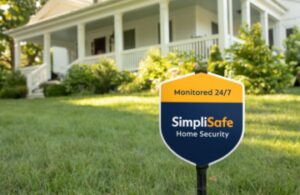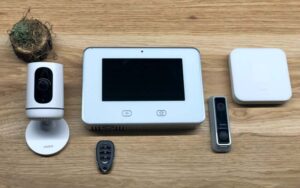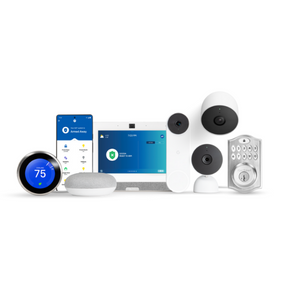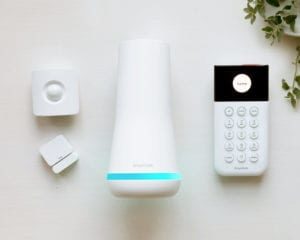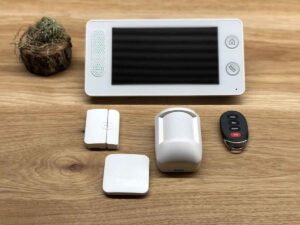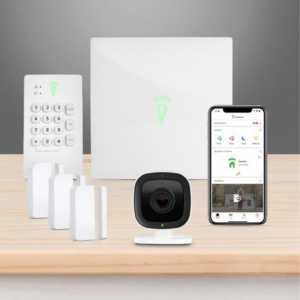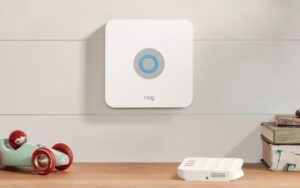We picked Vivint as the best home security system of 2024 after thousands of hours of tests and research. Our reviews help you see what each home security system does best to make it easier to find the right one for you.
The Best Home Security Systems of 2024
Info current as of publish date. Offers and availability may vary by location and are subject to change. Full ADT disclaimer
SafeWise experts have years of firsthand experience testing the products we recommend. Learn how we test and review.
What is the best security system for your home?
Over the past decade, we’ve researched, reviewed, compared, and ranked the best home security systems on the market to help you confidently protect what matters most in your life.
Vivint is our top pick because it's the leading company out there actively innovating to deter crime, not just record it. Vivint's state-of-the-art proprietary equipment, advanced smart home integration, and theft-deterrent features are a cut above the average system. Plus, every Vivint alarm system comes with professional monitoring, professional installation, and an in-home security assessment. For top-shelf home security from a name you trust, we also recommend ADT.
SimpliSafe is our DIY pick because of its streamlined, affordable DIY home security system that comes without a contract and an optional subscription after your first month (if you'd prefer self-monitoring). SimpliSafe offers stress-free online shopping and has low monthly monitoring fees. Plus, it is the only company on our list that gives you the freedom to start and stop professional monitoring, switching to self-monitoring whenever you like. Our next favorite DIY home security system is Cove, thanks to its super-simple installation and rave reviews from customers.
Whether you want to protect a big house with lots of land or a smaller home or apartment, we've got a security solution that will work. From security systems that come contract-free, have no monthly fees, or deliver white glove professional service from purchase to installation, here's our complete list of the top home security systems of 2024—and tips to help you choose the right one for you.
Top Security Systems for Homes in 2024
- : Best professional installation
- : Most trusted security brand
- : Best optional monitoring DIY security
- : Best customer rating
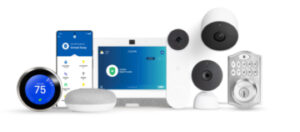
Things to consider before you buy a security system
You don't have to guess when it comes to home security. Here are the top things to consider before you decide on a system.
- What are you protecting? Are you most worried about your property, your pets, your people, your packages, or all?
- Where are you protecting it? Do you need to keep an eye on things outside or are you more focused on seeing what's happening inside your home?
- What kind of property are you protecting? Stand alone houses and apartments have different security vulnerabilities. Consider things like the number of ground-level doors and windows, multiple floors and entrances, and outbuildings—like a garage or shed.
- What's your budget? I always say that you shouldn't have to risk financial security to have home security. Identify your budget before you shop and stick to it.
- How hands-on do you want to be? Do you want a system that does everything for you—from installation to professional monitoring? Or is a DIY system more your style, where you can install it and monitor it yourself using a mobile app? Or do you want a little bit of both?
🔥 SimpliSafe is offering 45% off + FREE indoor camera* with Fast Protect™ Monitoring plan.
🔥 Cove is offering 50% off + FREE HD camera.
🔥 Frontpoint is offering up to 82% off + equipment packages starting at $69.
🔥 Abode is offering $99.99 home security starter kits + up to 50% off selected accessories.
🔥 ADT is offering FREE† installation of a Google Nest Doorbell.
Info current as of publish date. Offers and availability may vary by location and are subject to change.
*With system purchase.
†Requires a 36-month monitoring contract with ADT Video or Complete. Early term and installation fees apply. Taxes addt’l. New customers only.
The best home security system for you in 2024
1. The best professional security system
Vivint
When Vivint switched its focus from smart home to smart security, it was a game changer. If you’re on the hunt for a smart home security system that doesn’t require you to lift a finger, Vivint is the best of the bunch. Vivint’s high-end equipment with pro installation, 24/7 monitoring, smart home features, and state-of-the-art security tech make it the best wireless security system available.
Here's why Vivint is our top pick
We love Vivint home security for so many reasons:
- Professional installation that’s more affordable than competitors ($49)
- Financing model where equipment payment and monitoring are separate
- Free in-home security consultations
- Smart home security smartphone app
- Full proprietary equipment line (Vivint doesn’t just rely on other folk’s tech)
- Unique car guard device
- 24/7 professional monitoring
- Three-time TMA Center of the Year award winner
Standout feature: Vivint's security cameras with Smart Deter lurker detection are a staff favorite. We love the video doorbell with AI and proactive features (like the whistle) that scare away porch pirates. Learn all about it in our Vivint cameras guide.

Image credit: Vivint
Like any luxury item, you’d expect Vivint to come with a luxury price tag. It’s a balance: its equipment is pricey, but Vivint’s monthly monitoring fees remain in line with other top security companies (the U.S. average is $31.99/mo.) The Smart Home Video plan gives you video, smart home control, and integration for about $40 per month.
See everything that’s got us revved up about Vivint—read our full Vivint review.
Call
2. Most trusted home security system
ADT
Money-back service guarantee only applies after ADT has made attempts to resolve a system-related issue and has not been able to resolve that issue within the first 6 months of your contract.
ADT is the most experienced security company in the country. If you’ll sleep better knowing that a well-known, tried-and-true company is watching over your home, ADT is worth the money.
This is why ADT’s experience matters
No one can beat ADT’s experience.
- Top-notch protection delivered for 147 years
- ADT Home Security looks out for more than 8 million people across the globe
- 6 professional monitoring centers
- Partnerships and integration with tech from Google Nest and Ford
- 6-month service guarantee (the longest money-back period in the industry)
Standout feature: ADT Home Security has six redundant monitoring centers. If one monitoring station goes down, your home’s protection transfers to another center. That’s 24/7 protection that you can rely on, even when Mother Nature does her worst.
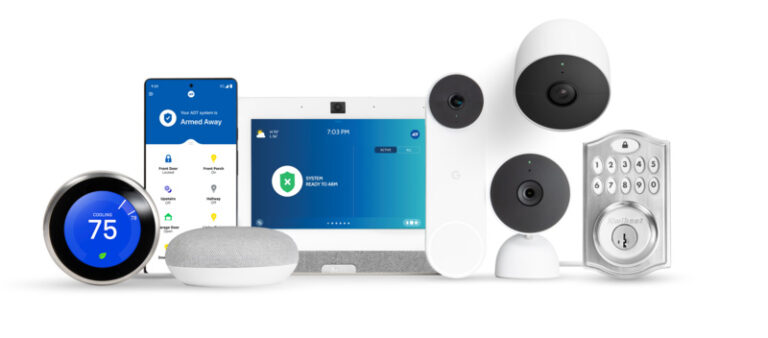
Image credit: ADT
If you’re going with one of the best home security providers out there, you may as well go all in. The Complete plan includes home automation controls, wireless equipment, and video monitoring, starting around $60 per month (Vivint starts at $45 for similar features). That works out to just under $800 a year.
If you have a three-year contract, that's around $2,400 over three years. That may seem steep, but keep in mind that the average loss from one burglary is around $2,600.
Learn more about what ADT has to offer in our full ADT review.
Call
3. Best DIY home security system with optional subscription
SimpliSafe
Our readers have spoken—and they love SimpliSafe’s affordable, straightforward cellular security system. SimpliSafe’s name says it all.
Its security systems are simple—and so is its pricing. SimpliSafe has some of the cheapest monthly monitoring fees available. Plus, you have the flexibility to start or stop your monthly monitoring subscription whenever you like.
If you prefer self-monitoring without a subscription, you can change your plan after the first month—just make sure to call to cancel or change your plan before the 30-day mark. (You can often get a deal as a new customer if you sign up for the 24/7 Fast Protect™ Monitoring plan when you sign up).
Here's what makes SimpliSafe a fan favorite
SimpliSafe does home security on its own terms. That means ditching some things that turn off customers: brash salespeople and lengthy contracts.
- You choose the equipment and monitoring level you want
- No-pressure online shopping
- Professional monitoring service on demand—no contracts
- Rapid SOS gets you help faster
- 60-day money-back guarantee
Standout feature: SimpliSafe has RapidSOS to quickly get help in an emergency, which is only found in one other system. Instead of going to a monitoring center, information is sent directly to 911 dispatchers. This helps first responders reach you faster, no matter where you are.
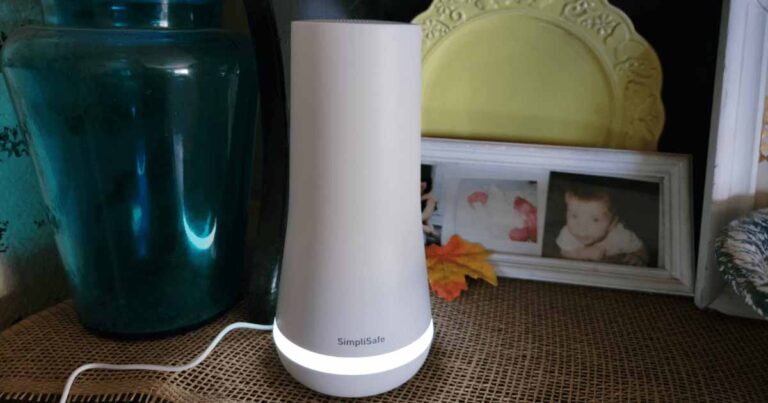
Image credit: Alina Bradford, SafeWise
We recommend the Fast Protect™ plan for pro monitoring. You can control your SimpliSafe security system through a mobile app for just $30 per month. Plus, you'll get email and text alerts, and access to live video if you add a home security camera.
Get the rundown on SimpliSafe’s offerings in our full SimpliSafe review.
Call
1-800-411-9637
4. The highest customer-rated home security system
Cove
If you’re motivated by good customer service, Cove will make you all warm and fuzzy inside. Cove told us its policy is to be “more than fair” with customers. That’s probably why Cove has a whopping 98%* customer retention rate. Customers love Cove, and we do too.
Here's how Cove puts customers first
Cove provides low-cost monthly monitoring without a contract and allows easy cancellation if the system doesn't suit your needs. Cove sets you free without punishing penalties and fees, unlike other security solutions that charge 75% to 100% of your remaining contract.
Cove has some more customer-forward goodies we love:
- Large 7-inch touchscreen panel that comes with every package
- InstaText service that lets you confirm an emergency through a quick text message
- LiveAssist service that calls you through the control panel (no phone needed!)
- Rapid response with RapidSOS to get you help sooner
- Cove Equipment Rewards that let you to upgrade to the newest safety equipment or smart home device for free
- Lifetime equipment warranty (only one other brand on our list offers a lifetime warranty)
- Rate-lock guarantee that keeps your monitoring price the same
Standout feature: Cove sets itself apart with something it calls “done-with-me installation.” This combo of professional and DIY lets you install the system yourself, with help.
The touchscreen walks you through installation with large, easy-to-follow illustrations. We’ll take this guidance any day over installation booklets or tiny illustrations on an app.

Image credit: SafeWise
When it comes to monitoring, the Cove Plus plan is our pick. For $28 per month, it includes video recording and monitoring and smart device integration plus a lifetime extended warranty.
Dig into more of what Cove has to offer in our full Cove review.
*Information provided by an interview with Cove representatives in October 2021.
Home security systems compared
Info current as of post date. Offers and availability may vary by location and are subject to change. Read full disclaimer.
Full ADT disclaimer
5. Best DIY equipment options
Frontpoint
Frontpoint delivers all the bells and whistles of full-service professionally installed systems but puts all the control (and installation) in your hands. For those who like the independence of DIY but don’t want to compromise on equipment options or features, Frontpoint fits the bill.
Here's why Frontpoint dominates DIY home security
Frontpoint delivers all the perks you want from any home security company:
- Smart home integration
- Lots of equipment to choose from
- Mobile smartphone app control
- Indoor and outdoor cameras
- 24/7 video recordings
- Surveillance footage you can access on your television
- Video verification to reduce false alarms
- Rapid response 24/7 professional monitoring with centers on each coast
- No pushy sales and in-home consultations
- Extras in its entry-level plan like CO and smoke detector monitoring
- No wires for burglars to cut on this wireless alarm system
Standout feature: Every system comes with Frontpoint ID Protect powered by AllState Identity Protection. Yep, this smart system protects your home, those you love and your identity—plus you get this service for free.
For a limited time, Frontpoint is giving SafeWise readers a FREE slim line doorbell camera with qualifying purchase!
For a limited time, while supplies last.
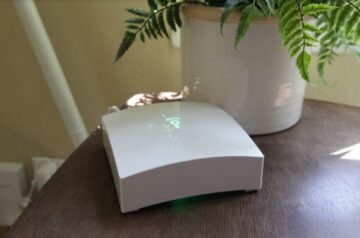
Image: SafeWise
Learn about Frontpoint's plans, packages, and equipment in our review. Also, find out how simple it is to install with our installation guide.
Call
6. Best cheap home security system
Ring
Ring is the best Wi-Fi security system for building your home’s protection around cameras.
This is why Ring is security camera royalty
Even the best systems seem to slack when it comes to security cameras. Many brands tend to offer a basic selection with basic features. Not Ring. It has everything from Ring doorbell cameras to Ring floodlight cameras with excellent video quality and advanced features:
- Geofencing
- IFTTT compatibility
- 3D motion detection
- Dual-band Wi-Fi
- Motion tracking
- Advanced noise cancellation
- Loud sirens
Standout feature: For $100 more than the basic 5-piece starter kit, the Ring Alarm Pro 8-piece kit comes with a built-in eero Wi-Fi 6 router. The router stabilizes Wi-Fi with speeds up to 900 Mbps and covers up to 1,500 square feet. Plus, your Ring system has 24/7 backup internet to keep it connected during a power outage.
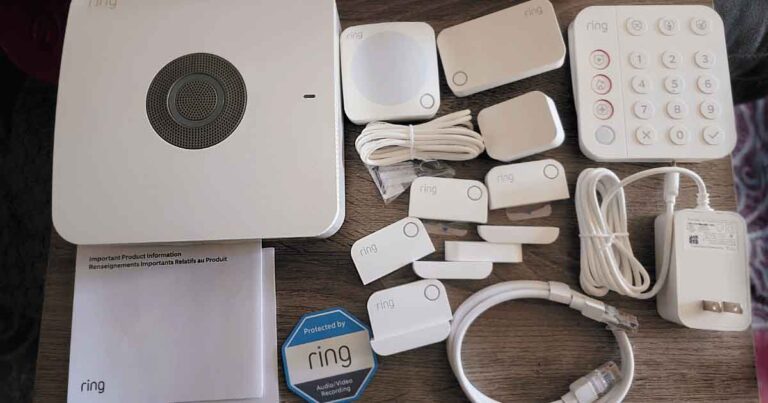
Image credit: SafeWise
Ring Alarm security kits are affordable. You can buy Ring's five-piece set and receive one year of monthly monitoring for approximately $400. This is cheaper than purchasing equipment alone from other DIY companies.
Read all about Ring alarm equipment and prices in our full Ring Alarm review.
How we tested the best home security sytems
We tested and researched each system in our roundup in our homes. We scoured customer reviews to capture their experiences and feedback. We also talked to the tech teams, CEOs, and other innovators at the companies we review. Below you can find a summary of our hands-on testing and research for our top-rated security companies.
Vivint testing: We are conducting a long-term test of Vivint in the home of one of our experts. We've also met with Vivint for demos and a behind-the-scenes look at their product development process. We talk to Vivint often about how their system works, what customers think, and what we want them to do next.
SimpliSafe testing: To date, we've tried SimpliSafe in four different homes and in lab tests (once I accidentally scared everyone in the office with the siren that I couldn't turn off). We also talk to SimpliSafe representatives regularly about current and upcoming product offerings and follow SimpliSafe's customer forums.
ADT testing and ADT self setup: We keep tabs on how ADT security systems perform in both the short- and long-term. We've tried out equipment in testing lab scenarios, followed long-term and new ADT customers to document what they like (and don't like), and gone through an ADT installer crash course to understand what you can expect when an installer comes to your home.
Cove testing: We've had two of our testing experts set up and live with Cove in their homes. We also meet with Cove regularly for demos, customer feedback, and insights about current and new product offerings.
Ring Alarm testing: We have a Ring Alarm system and our tester is using it at home to see how it works every day.
Frontpoint testing: We got to experience the Frontpoint home security system firsthand. Through our in-house tester we learned about customer service, the company's refund policy, installation, and the system's daily performance.
Home security system frequently asked questions
Vivint is our pick for the best home security camera system. Vivint's Outdoor Pro and Doorbell Pro cameras are designed to scare off bad actors before they break in or snatch a package off your porch. Vivint's proactive Smart Deter lurker protection includes strobing lights, whistles and even pre-recorded messages that let burglars know they picked the wrong house.
Yes, a home security is worth the investment over time. It would take around six years of paying for a home security system to match the cost of being burgled just one time. The average loss from a burglary is over $2,600.
With the average annual cost of a home security system coming in around $400 after equipment, it’s a preventative measure that’s worth it. Plus, you can get discounts on home owners insurance, and most burglars say they’d skip a house that has a security system.
A home security system is a network of integrated devices linked to a central control panel that helps protect against burglaries and other intrusions. The system typically includes:
- A control panel or base station
- Sensors for doors and windows
- Motion sensors
- Glass break sensors
- Security cameras
These components monitor entry into your home and trigger an alarm after a short delay if unauthorized access is detected. This delay allows time to disarm the system to prevent false alarms. If the system is monitored, a professional service contacts you when the alarm is activated.
Home security systems operate in a coordinated manner, with each component communicating its status to the control panel. This information is then relayed to your smartphone and, if subscribed, to a monitoring station. The control panel acts as the central hub, connecting all the components. It can connect via Wi-Fi or cellular data. Hardwired systems use electrical wiring to connect components, while wireless systems utilize radio frequencies or mesh networks for communication.
For more information, check out our full article on what is a home security system and how does it work?
Subscribe to our YouTube channel and learn how to protect your home, loved ones, and belongings.
The best self-monitoring security system is Eufy, which operates effectively without a subscription. It features local storage for security footage and supports a variety of cameras. The HomeBase 3, Eufy's latest base station, includes advanced smart detection capabilities like recognizing people, vehicles, animals, and even facial recognition.
While professional monitoring is optional through Eufy's Protection Plan Plus for about $10 per month, you can get solid home security from Eufy without paying extra.
To learn more, check out the pros and cons of self-monitoring home security systems.
It depends on which security company you choose. Many professionally monitored home security systems require a contract, and contract length can range from three to five years. But you’ll find more home security options than ever before that offer shorter contracts and month-to-month (contract-free) terms—especially if you can pay for equipment up front.
Most home security companies will charge you around 75% of the remaining term of your contract if you cancel early—and some require 100%.
Related questions
The average monthly monitoring cost for a home security system is just under $32 per month. Home security system equipment can range from around $200 up to more than $1,000 depending on how many sensors and cameras you need.
Based on our comparisons of home security monthly fees, you can find pro monitoring for as little as $8 per month, but that's for the basics, and doesn't usually include video monitoring. Plans that include perks like smart home integration and video monitoring can run between $40 and $60 per month.
That adds up to around $720 or less per year, but it's far less than the cost of a break-in. The average loss from a burglary is nearly $3,000. Keep in mind that the more features and security devices you add to your system, the bigger the price tag.
Related questions
How we review the best home security systems

Image: SafeWise. Getting "hands-on" with home security equipment.
Every month, more than 1 million visitors look to us for home security information and recommendations. Our honest reviews and expert insights come from thousands of hours of hands-on tests, interviews with real customers, and meetings with technical pros, owners, and CEOs of large and small home security companies.
How we chose our top picks
We put in the time to help you find out which home security systems are worth your time, money, and confidence.
We test security systems in our homes, our friends' homes, and our extended family's homes. We analyze customer ratings and reviews. We compare how each one performs in different settings and to meet different needs. We line up the pricing—upfront, monthly, and over time—to see how much investment you really have to make.
- 3.9k+ hours of research and testing
- 23 in-home tests
- 20 security systems considered for our top 10
The security systems that make it on our top 10 list come from tried and true home security, security camera, or smart home brands. Because home security isn't one size fits all, our best security systems represent a variety of options for homeowners and renters, work for different budgets, and demonstrate a consistent interest in customer and expert feedback.
While our strongest recommendation is for security systems with professional monitoring, we also value systems that offer easy, affordable, and reliable self-monitoring options.
Our home security system ratings methodology
While we test and research, we look at five primary factors that matter most for protecting your home and family:
- Costs and contracts
- Response time and monitoring options
- Security features and smart home integration.
- Customer service and reputation.
- Ease of installation and use.
Learn more about our rigorous testing process in our full methodology.
Disclaimers
Product prices and availability are accurate as of the date/time indicated and are subject to change. Any price and availability information displayed on Amazon at the time of purchase will apply to the purchase of this product. Safewise.com utilizes paid Amazon links.
Certain content that appears on this site comes from Amazon. This content is provided "as is" and is subject to change or removal at any time.
†Google, Google Nest Secure, Google Home, Google Nest Protect, and other related marks are trademarks of Google LLC.
Recent Articles








